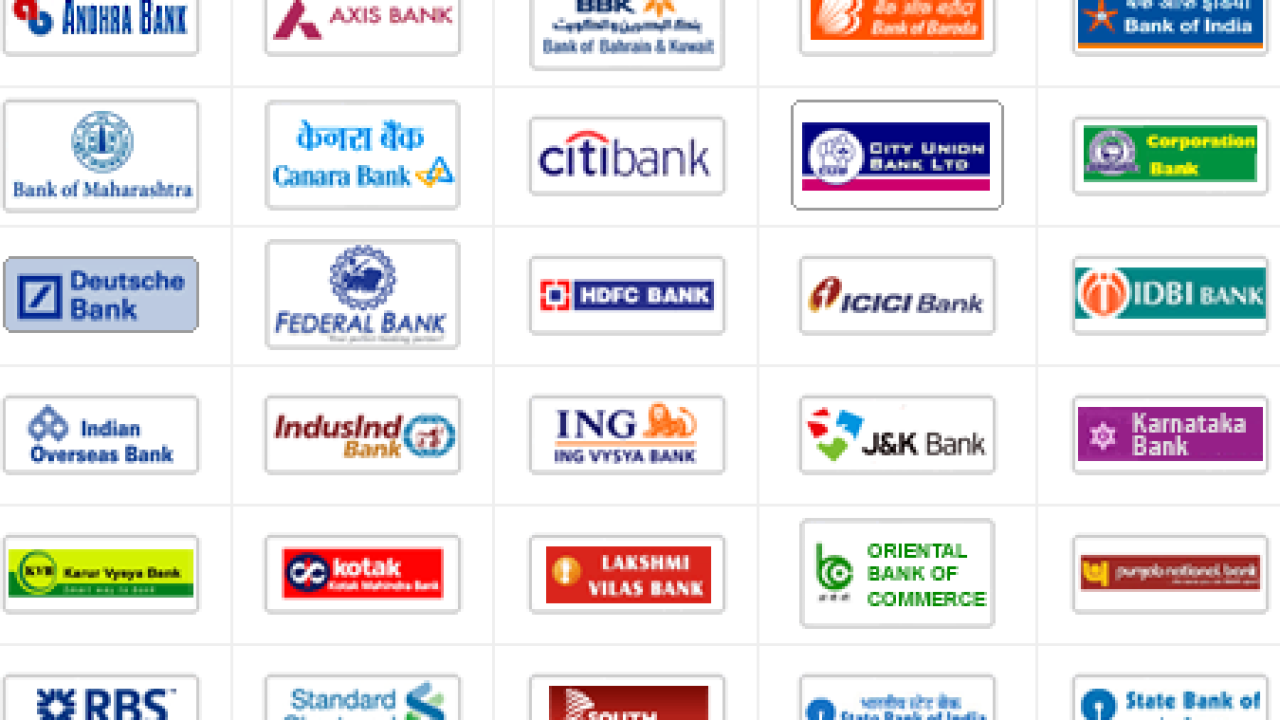In today’s digital age, websites of banks in India have become an essential tool for customers to manage their finances, access services, and stay updated with the latest banking trends. With the rapid growth of internet penetration and smartphone usage, Indian banks have embraced technology to provide seamless online experiences to their customers. This article delves into the websites of banks in India, exploring their features, functionalities, and how they cater to the diverse needs of millions of users across the country.
The Evolution of Banking Websites in India
The journey of websites of banks in India began in the late 1990s when the first few banks ventured into the digital space. Initially, these websites were basic, offering limited information about the bank’s services and contact details. However, with advancements in technology and the increasing demand for online banking, these websites have transformed into powerful platforms that provide a wide range of services.
Early Days of Banking Websites
In the early days, websites of banks in India were primarily informational. They provided details about the bank’s history, branch locations, and contact information. Customers could not perform transactions or access their accounts online. The primary purpose of these websites was to serve as a digital brochure for the bank.
Introduction of Online Banking
The early 2000s saw the introduction of online banking in India. Banks started offering basic online services like checking account balances and viewing transaction history. This was a significant step forward, as it allowed customers to access their financial information from the comfort of their homes.
The Rise of Mobile Banking
With the proliferation of smartphones in the 2010s, websites of banks in India began to evolve further. Banks started developing mobile-friendly websites and dedicated mobile apps to cater to the growing number of smartphone users. This marked the beginning of a new era in digital banking, where customers could perform a wide range of transactions on their mobile devices.
Current State of Banking Websites
Today, websites of banks in India are not just informational portals but full-fledged digital banking platforms. They offer features like online account opening, fund transfers, loan applications, investment options, and customer support. The evolution of these websites reflects the broader shift in the banking sector towards digitalization and customer-centric services.

Key Features of Banking Websites in India
1. User-Friendly Interface
One of the most important aspects of websites of banks in India is their user-friendly interface. Banks have invested heavily in designing websites that are easy to navigate, even for users with limited technical knowledge. Clear menus, intuitive layouts, and responsive designs ensure that customers can access the information they need without any hassle.
- Responsive Design: Most banking websites are designed to be responsive, meaning they adapt to different screen sizes and devices. This ensures a seamless experience whether the customer is accessing the website from a desktop, tablet, or smartphone.
- Accessibility Features: Many banks have incorporated accessibility features into their websites, such as screen reader compatibility and adjustable font sizes, to cater to customers with disabilities.
2. Online Account Management
Most websites of banks in India allow customers to manage their accounts online. This includes checking account balances, viewing transaction history, downloading statements, and updating personal information. These features provide customers with greater control over their finances and reduce the need to visit physical branches.
- Account Dashboard: Customers can access a personalized dashboard that provides an overview of their accounts, including balances, recent transactions, and pending payments.
- E-Statements: Instead of receiving paper statements, customers can download e-statements directly from the website. This not only saves time but also contributes to environmental sustainability.
3. Fund Transfer and Payment Services
Fund transfer is one of the most frequently used services on websites of banks in India. Customers can transfer money within the same bank (NEFT, RTGS) or to other banks (IMPS, UPI). Additionally, many banks offer bill payment services, allowing customers to pay utility bills, credit card bills, and more directly through their websites.
- NEFT and RTGS: These are electronic fund transfer systems that allow customers to transfer money within India. NEFT (National Electronic Funds Transfer) is used for smaller amounts, while RTGS (Real-Time Gross Settlement) is used for larger amounts.
- IMPS and UPI: IMPS (Immediate Payment Service) and UPI (Unified Payments Interface) are instant payment systems that allow customers to transfer money 24/7, including on holidays.
4. Loan and Credit Card Applications
Applying for loans and credit cards has never been easier, thanks to websites of banks in India. Customers can browse through various loan options, check eligibility criteria, and submit applications online. The websites also provide tools like EMI calculators to help customers make informed decisions.
- Loan Calculators: Many banking websites offer loan calculators that allow customers to estimate their monthly EMIs based on the loan amount, interest rate, and tenure.
- Document Upload: Customers can upload necessary documents directly through the website, eliminating the need to visit a branch.
5. Investment and Wealth Management
Many websites of banks in India offer investment and wealth management services. Customers can explore options like fixed deposits, mutual funds, insurance, and more. Some banks also provide personalized financial advice through their websites, helping customers achieve their financial goals.
- Fixed Deposits: Customers can open fixed deposit accounts online, compare interest rates, and choose the tenure that best suits their needs.
- Mutual Funds: Many banks offer a wide range of mutual funds that customers can invest in directly through the website.
6. Customer Support and Chatbots
To enhance customer experience, websites of banks in India often include robust customer support features. This includes FAQs, live chat support, and AI-powered chatbots that can answer queries and resolve issues in real-time. These features ensure that customers receive timely assistance whenever they need it.
- Live Chat Support: Customers can connect with a customer service representative in real-time to resolve their queries.
- AI-Powered Chatbots: Many banks have integrated AI-powered chatbots into their websites to provide instant responses to common queries.
| List of Public Sector Banks in India | |
|---|---|
| Sr. No | Name of the Bank |
| 1 | Bank of Baroda |
| 2 | Bank of India |
| 3 | Bank of Maharashtra |
| 4 | Canara Bank |
| 5 | Central Bank of India |
| 6 | Indian Bank |
| 7 | Indian Overseas Bank |
| 8 | Punjab & Sind Bank |
| 9 | Punjab National Bank |
| 10 | State Bank of India |
| 11 | UCO Bank |
| 12 | Union Bank of India |
| List of Financial Institutions in India | |
|---|---|
| Sr. No | Name of the Bank |
| 1 | National Bank for Agriculture and Rural Development |
| 2 | Export-Import Bank of India |
| 3 | National Housing Bank |
| 4 | Small Industries Development Bank of India |
List of Foreign Banks Having Banking Presence in India
Notes on Regional Rural Banks (RRBs)
Since the full list of Regional Rural Banks (RRBs) was truncated in your original query, here’s a continuation of the remaining banks. Note that most RRBs follow a similar naming convention, often including the name of the sponsoring public sector bank and the region they serve. Below are additional examples:
Remaining RRBs:
Top Banks and Their Websites in India
India is home to a diverse range of banks, including public sector banks, private banks, and foreign banks. Below, we highlight some of the leading banks and their websites:
1. State Bank of India (SBI)
The State Bank of India is the largest public sector bank in India, and its website, www.sbi.co.in, is a one-stop destination for all banking needs. The website offers a wide range of services, including personal banking, corporate banking, and international banking.
- Personal Banking: Customers can access services like online account management, fund transfers, and loan applications.
- Corporate Banking: The website provides specialized services for businesses, including corporate loans, trade finance, and cash management.
2. HDFC Bank
HDFC Bank is one of the leading private sector banks in India. Its website, www.hdfcbank.com, is known for its user-friendly interface and comprehensive services. Customers can access features like net banking, mobile banking, and investment options with ease.
- Net Banking: HDFC Bank’s net banking platform offers a wide range of services, including fund transfers, bill payments, and account management.
- Mobile Banking: The bank’s mobile app provides a seamless banking experience on the go.
3. ICICI Bank
ICICI Bank is another prominent private sector bank with a highly functional website, www.icicibank.com. The website offers a seamless online banking experience, with features like instant fund transfers, loan applications, and wealth management services.
- Instant Fund Transfers: Customers can transfer money instantly using IMPS, NEFT, or UPI.
- Wealth Management: The website offers a range of investment options, including mutual funds, fixed deposits, and insurance.
4. Punjab National Bank (PNB)
As one of the oldest public sector banks in India, Punjab National Bank has a well-designed website, www.pnbindia.in. The website provides a range of services, including online account management, loan applications, and customer support.
- Online Account Management: Customers can check their account balances, view transaction history, and download statements.
- Loan Applications: The website allows customers to apply for personal loans, home loans, and other types of loans online.
5. Axis Bank
Axis Bank is known for its innovative digital banking solutions, and its website, www.axisbank.com, reflects this commitment. The website offers features like instant money transfers, investment options, and personalized financial advice.
- Instant Money Transfers: Customers can transfer money instantly using IMPS, NEFT, or UPI.
- Investment Options: The website offers a wide range of investment options, including mutual funds, fixed deposits, and insurance.
Security Measures on Banking Websites in India
Security is a top priority for websites of banks in India. Banks employ advanced security measures to protect customer data and prevent unauthorized access. Some of the key security features include:
- SSL Encryption: Secure Socket Layer (SSL) encryption ensures that all data transmitted between the customer’s browser and the bank’s server is encrypted and secure.
- Two-Factor Authentication (2FA): Many banks use 2FA to add an extra layer of security. Customers are required to enter a one-time password (OTP) sent to their registered mobile number or email address to complete transactions.
- Regular Security Audits: Banks conduct regular security audits to identify and fix vulnerabilities in their websites.
- Fraud Detection Systems: Advanced fraud detection systems monitor transactions in real-time and flag any suspicious activity.
The Future of Banking Websites in India
The future of websites of banks in India looks promising, with several trends shaping their evolution:
1. Artificial Intelligence (AI) and Machine Learning
AI and machine learning are being increasingly integrated into banking websites to provide personalized services and improve customer experience. For example, AI-powered chatbots can handle customer queries, while machine learning algorithms can analyze customer behavior to offer tailored financial products.
2. Voice-Activated Banking
Voice-activated banking is an emerging trend that allows customers to perform banking tasks using voice commands. This feature is particularly useful for visually impaired customers and those who prefer hands-free banking.
3. Blockchain Technology
Blockchain technology has the potential to revolutionize banking by enhancing security and transparency. Some banks in India are already exploring the use of blockchain for cross-border payments and other services.
4. Enhanced Mobile Integration
With the growing popularity of smartphones, websites of banks in India are increasingly being optimized for mobile devices. Many banks offer dedicated mobile apps that provide a seamless banking experience on the go.
Conclusion
Websites of banks in India have come a long way since their inception, evolving into sophisticated platforms that cater to the diverse needs of customers. From online account management to investment services, these websites offer a wide range of features that make banking convenient and accessible. As technology continues to advance, we can expect websites of banks in India to become even more innovative and customer-centric.
“The digital transformation of banking in India has made financial services more accessible and efficient than ever before. With user-friendly interfaces, robust security measures, and a wide range of services, websites of banks in India are setting new standards in the banking industry.”
FAQs About Websites of Banks in India
- What services can I access on the websites of banks in India?
You can access services like online account management, fund transfers, loan applications, investment options, and customer support. - Are banking websites in India secure?
Yes, banking websites in India employ advanced security measures like SSL encryption, two-factor authentication, and fraud detection systems to protect customer data. - Can I open a bank account online in India?
Yes, many banks in India offer online account opening services through their websites. - How do I transfer money using a banking website in India?
You can transfer money using services like NEFT, RTGS, IMPS, or UPI, which are available on most banking websites in India. - What is the role of AI in banking websites in India?
AI is used to provide personalized services, improve customer experience, and enhance security on banking websites in India. - Can I apply for a loan through a banking website in India?
Yes, most banking websites in India allow you to apply for loans online, check eligibility criteria, and calculate EMIs. - Do banking websites in India offer investment options?
Yes, many banking websites in India offer investment options like fixed deposits, mutual funds, and insurance. - How can I contact customer support on a banking website in India?
You can contact customer support through features like live chat, chatbots, or by submitting a query on the website. - Are banking websites in India mobile-friendly?
Yes, most banking websites in India are optimized for mobile devices and offer dedicated mobile apps for a seamless banking experience. - What is the future of banking websites in India?
The future of banking websites in India includes trends like AI integration, voice-activated banking, blockchain technology, and enhanced mobile integration.





amoxicillin canada – combamoxi buy amoxicillin online cheap
fluconazole 200mg ca – click buy diflucan 100mg pills